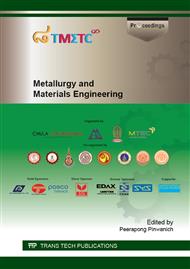p.81
p.86
p.91
p.96
p.101
p.106
p.111
p.120
p.125
Assessment of Electricity Generation on Different Inorganic and Metallic Embedded in Solar Photovoltaic Panels: Cases of Thailand
Abstract:
Photovoltaic (PV) has recently undergone impressive growth and substantial cost decreases. Basically wafer-based crystalline-Si PV technologies have the advantage of higher module efficiency as compared to thin-film PV, but thin-film PV has the advantage of lower production cost. The silicon-based solar PV needs light-induced charge separation at the p-n junction between two slices (wafers) of doped silicon in either single-crystal silicon (sc-Si) or polycrystalline (poly-Si). However until recently thin-film PV modules both amorphous silicon (a-Si) and non-silicon thin film technology have been advantageous developed. Metallic based modules such as cadmium telluride, CdTe and copper indium gallium diselenide, CIGS thin-film PV technologies have currently efficiencies of 16.1% and 15.7%, respectively. A high efficiency makes thin-film PV technologies more competitive with wafer-based crystalline-Si PV. This study investigates the electricity generation of both silicon based and non-silicon based solar PV modules. The implementation uses solar irradiation with average of higher than 18 MJ/m2.day in high solar radiation provinces in Thailand. A High solar radiation is observed in mostly in central and the east regions of the country. The result shows that the commercial amorphous PV module is appropriate for large scale installation while wafer-based crystalline-Si PV can be installed both in cases of solar rooftop and solar PV farm. Thin-film PV modules both silicon based (a-Si) and non-silicon based is basically appropriate for small installation such as solar rooftop and building integrated PV (BIPV). But in the near future the metallic based PV modules will be competitive with crystalline-Si PV in terms of both efficiency and with its lower cost.
Info:
Periodical:
Pages:
101-105
Citation:
Online since:
July 2015
Authors:
Keywords:
Price:
Сopyright:
© 2015 Trans Tech Publications Ltd. All Rights Reserved
Share:
Citation:


